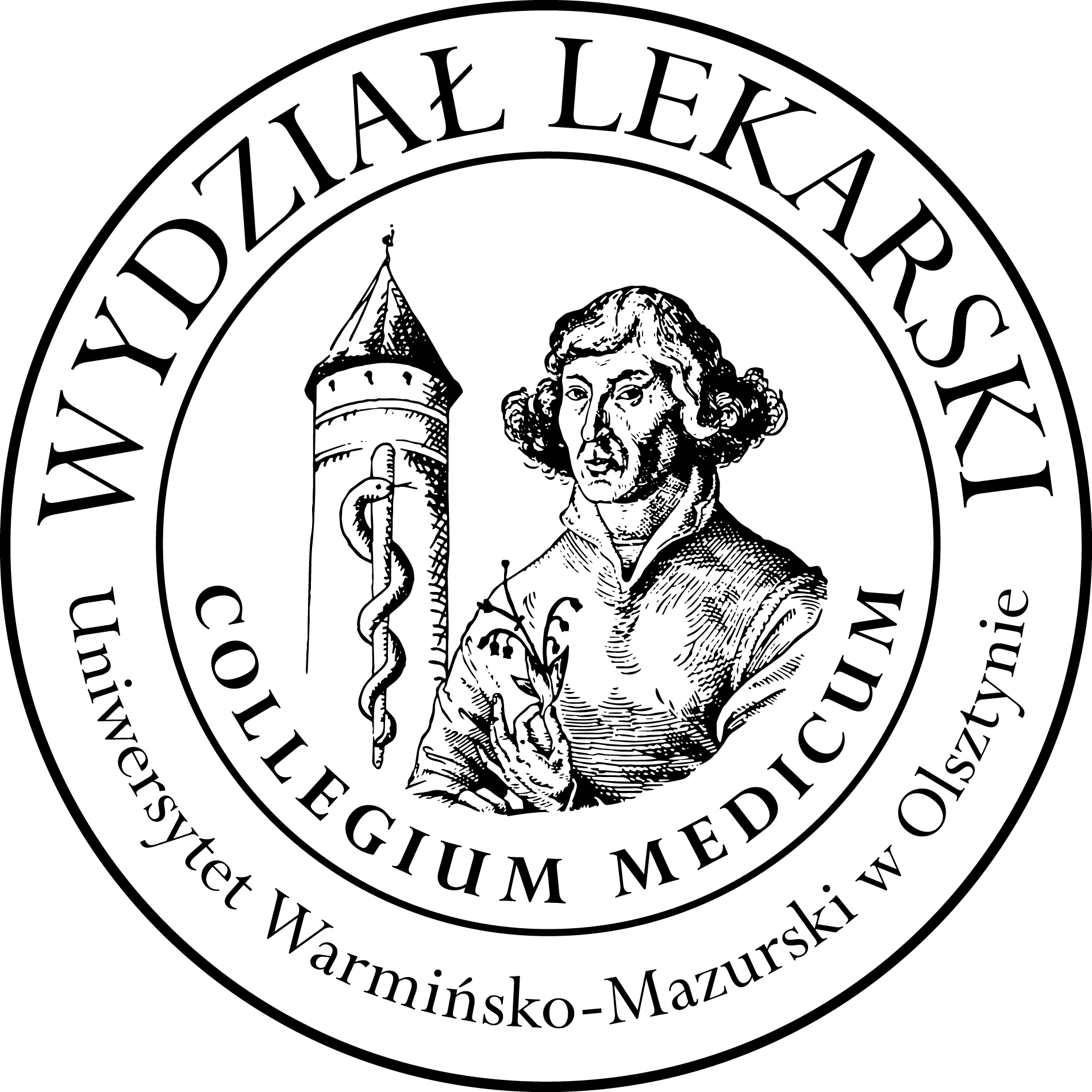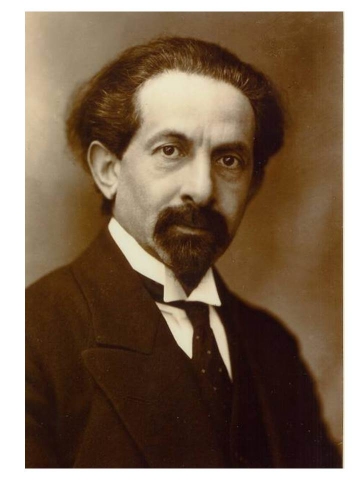Edward Flatau
Edward Flatau was born on December 25, 1868 in Płock (which in the 19th century was in the Russian Empire) as one of five children of a banker and grain merchant Ludwik and his wife Helena nee Heyman. In childhood he was seriously ill with typhoid fever. For a long time he was unconscious, and (as he mentioned years later) after the illness he had a much better and sharper memory. This incident was the basis for the later theory of Flatau, that infections may have a positive influence on the nervous tissues. In 1886 Flatau finished with a gold medal at Płock middle school – the oldest and one of the best schools in the Polish land. In the same Year he moved to Moscow and started to study medicine. During the study, Flatau contacted with two distinguished Russian scientist: neurologist Aleksei Kozhevnikov and psychiatrist Sergei Korsakoff. It can be expected that these scientists had a big influence on the later scientific interests of Flatau.

Flatau got a medical degree with honors in 1892. After the graduation, he went to Berlin to improve his knowledge concerning the neuroanatomy and neurology. During his stay in Germany, Falatau co-worked with world class specialists in this area, including Emanuel Mendel, Ernst Viktor von Leyden, Hermann Oppenheim, Hugo Liepmann and others. At that time Flatau developed his independent scientific activity. At the age of 26 (two years after study), Flatau got publicity by publishing “Atlas of the human brain and the course of the nerve-fibres”.

The atlas presented in detail the surface, cross-sections and anatomical relationships in the fresh brain using long-exposure photos made with a specially constructed camera. Photographs were made in the department of prof. Emmanuel Mendel.

This was the first such precise description of the brain anatomy. In the words of Sigmund Freud, “The photographs in the atlas were clear and accounted for excellent educational material”. The work of Flatau gained international fame and shortly it was translated into German, English, French, Russian, and in 1896 into Polish. In 1899 Flatau published the second edition of the atlas which was extended and composed of two parts: an atlas and a supplement.


Flatau was a supporter of women’s emancipation, because as he wrote in the work “The nervous system in the light of newest studies”: “If we want to stay in the field of facts and do not draw unilateral and subjective conclusions, then we must say that the data taken from the anatomy and concerning the weight of the female brain cannot serve as a weapon against the higher aspirants of women”.
In Germany Flatau also worked on the histology of the nervous system. He was a strong supporter of the neuron theory, introduced (together with the term "neuron") by Wilhelm Waldeyer to describe the basic structural unit of the nervous system in 1891. Flatau argued the oneness of the neuron by the transection of Oculomotor nerve in dogs and observation of changes in its nuclei. Then he together with Alfred Goldscheider also studied the influence of various pathological stimuli (mechanical, thermal and toxic) on anatomy and functions of neuronal cells. The observations obtained during the study were presented in the book “Normal and pathological anatomy of nerve cells" published in 1898.


Simultaneously Flatau conducted numerous experiments on dogs, during which he transversely cut spinal cords, acted on the spinal cords using electrical stimuli and observed symptoms. On the basis of these experiments he noted that "greater the length of the fibres in the spinal cord the closer they are situated to the periphery" and this statement is known as Flatau's law.

The obtained results Flatau described in the work entitled “The law of excentric storage of long tracks in the spinal cord” published in 1897, which was the basis to receive a PhD in medical sciences in Moscow in 1899. The famous neurologist Louis Jacobsohn-Lask said about this work: “Among the many works which Flatau announced at the time, one especially impressed me because it was a simple and happy solution to the problem of building a part of the nervous system”. During his stay in Germany Flatau also wrote books about comparative anatomy of the nervous system in mammals and athological anatomy of the nervous system, as well as he was the author of the chapter about inflammation of the peripheral nerves in the famous, classic manual of pathology of Nothnagel.



Thanks to his academic work, Flatau became famous around the world. In 1898 he obtained a proposition form the university in Buenos Aires to be a chair of the Department of Neurology, but Flatau felt Polish and wanted to work in Polish lands.


So, in 1899 (after six years of work in Berlin) Flatau went to Poland and started to work in Warsaw. Initially he worked as a neurological consultant at Infant Jesus Hospital. Simultaneously Flatau opened the microscopic laboratory in his private flat on the Marszałkowska 150 Street, where he continued the studies on cytoarchitecture of the brain. In the same house, on the ground floor there was a famous fashion house. So Warsaw residents joked that ladies go shopping and spend a lot of money, so their husbands have to go to a specialist in nervous diseases. The scientific work in home conditions was not easy. Wacław Solski – the nephew of Flatau mentioned: “Animal and human brains examined by our uncle were collected in jars with spirit in the long, narrow room. At night, a dog (St. Bernard breed) pressed the handle with his paw, he removed the lid of the jar with his teeth and ate the brain, always only one. The uncle noticed it in the next day or after a few days, because he worked in the laboratory not every day. He announced that the dog would be thrown out”.

In 1904 Flatau became the head of the department of neurology at The Warsaw Jewish Hospital in Czyste, where he worked for 28 years. One of Falatu’s pupils and co-worker Eufemiusz Hermann mentioned: “On Mondays, he held traditional bed checks. He discussed every case near the patient's bed, he talked vividly, listening to the voice of everyone, even the youngest surgeon ... As a teacher and supervisor he was attached deeply to all who cooperated with him. His pupils could benefit from his great experience and extensive knowledge. He was patient, forgiving, always cheerful, treating his disciples as a beloved family. A high-minded forehead, deep dark eyes with insightful and yet warm eyes, low voice with a wide scale of modulation - these are qualities that besides deep knowledge and great experience have attracted and enchanted everyone who found himself in the circle of Flatau's inexhaustible business”.


Moreover, Edward Flatau got involved in the activity of The Warsaw Scientific Society and Psychological Association, which were established in 1907. In the framework of these organizations (through the donation of Józefa Tuchanowska, who gave ten thousand rubles for scientific purposes) Flatau created the first Polish professional neurological microscopic laboratory. In 1913 he was chosen for the first head of the Department of Neurobiology of Warsaw Scientific Society. The department conducted research in the field of general and comparative anatomy of the nervous system, physiology, pathological anatomy, experimental pathology and experimental therapy of the neurological diseases. Eufemiusz Hermann mentioned that “Day after day at 9 a.m. Flatau came to the neurobiological laboratory. Here he performed experiments on animals, observed histological preparations, collected literature, and conferred with his co-workers. At 11 a.m. he went to a coffee shop, and after 15 minutes, he went to the hospital in Czyste.”
After Poland regained independence in 1918 Flatau re-established Polish neurology. At the end of 1918, Kazimierz Białaszewicz – head of the Department of Physiology, together with Edward Flatau - head of the Department of Neurobiology and Romuald Minkiewicz - head of the General Biology Department jointly addressed the Management Board of the Warsaw Scientific Society with the initiative of separating these three departments from the Warsaw Scientific Society laboratories and establishing the independent organization called Nencki Institute of Experimental Biology. This institute worked on various branches of medical and biological sciences, including the normal, comparative and pathological anatomy of the nervous system, pathology and experimental treatments, endocrinology, blood and lymphatic vessels in the nervous system, malignancies of the brain and many others.

Simultaneously, Flatau worked as a neurologist at the hospital in Czyste and for many years, he tried to create a Pathological Institute there, because he knew about the importance of laboratory studies in the diagnosis of the neurological disease. He expressed it in the words: “Laboratory work is able to deepen the essence of the disease, give guidelines in the direction of its origin and treatment, and thus give results with greater scientific significance". Unfortunately, the Pathological Institute at the hospital in Czyste was not founded until after Flatau passed (in 1933).



In January 1932, Flatau diagnosed himself with a brain tumor and made up exact observations about his illness. He died five months later (on June 7, 1932) and he was buried at the Jewish Cemetery in Warsaw. Edward Flatau was not only a scientist in the field of neuroscience and brain anatomy, but all his life also served the people who cried for help at neurological hospitals. The attitude effort of Flatau during his work is reflected most clearly in the words of his friend – neurologist Samuel Goldflam, who said at the funeral of Flatau: “He was a work fanatic and he worked till he dropped”.

Other scientific achievements of Edward Flatau
In addition to the above-mentioned achievements of Flatau in normal and pathological anatomy and physiology of the nervous system he also dealt with the following issues:
- the anatomy of cranial nerves. He described the fifth, seventh, and eighth cranial nerves, and carefully outlined their nuclei;
- experimental studies to explain mechanisms of hematomyelia (intramedullary spinal cord hemorrhage);
- the treatment of cancer. He described the significant destructive influence of radium rays on malignant cells of the brain and spinal cord and gave the most effective method of treatment, consisting in combining surgery with radiation of tissues with X-rays and radium;
- mechanisms connected with a wide range of neurological diseases. He described for the first time torsion spasm in children (in 1911), the meningeal symptoms during tuberculosis (1921-1923). Flatau is an author of the first description of encephalomyelitis epidemica disseminate - now known as Flatau-Redlich disease (in 1927);
- symptoms and treatment of multiple sclerosis;
- symptoms of brain inflammation and meningitis. Flatau's sign - a common name for two meningitis symptoms. These symptoms may be positive with increased intracranial pressure and with meningitis. There are two of Flatau’s signs: Flatau's upper symptom (cervical-mydriatic) - the pupils dilate with passive inclination of the head and Flatau's bottom symptom (erectile) - in small boys with a few inclinations of the trunk towards the front, the erection of the penis appears;
- the permeability of the blood-brain barrier;
- subarachnoid hemorrhages;
- migraine. In 1912, he published in German and Polish one of the first modern monographs about this disease. Interestingly, some observations Flatau made on himself, because he suffered from migraines all his life.




